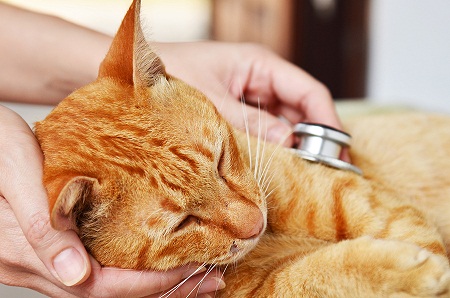Cat flu is an infection to feline respiratory system caused by several organisms. Cats that haven’t received vaccinations often show cat flu symptoms. If your pet lives in a crowded, dirty place with poor ventilation and high humidity, they’re more likely to catch it.

Cat flu symptoms can greatly vary based on the virus that attacks the cat. Even though we vaccinate the cats, flu can primarily affect young pets and older cats. Flu mainly occurs due to two types of viruses, such as Feline Calicivirus (FCV) or Feline Herpes Virus-1 (FHV-1). Therefore, it is essential for a pet parent to protect their cat.
Cat flu symptoms caused by Feline Calcivirus (FCV):
- Calcivirus can cause cold like symptoms that lead to runny nose and eyes. This virus can even affect the eye membranes; however, it doesn’t lead to eye ulcer.
- FCV can cause joint pain due to which your cat can limp. Studies proved that calcivirus can cause limping syndrome, which first affects one leg and then another.
- Ulceration of tongue, lips, palate, mouth and nose tip is one of the most common cat flu symptoms. Due to this, cat gums can even be affected with gingivitis.
- Fever may or may not exist. Loss of appetite is also common in cat because mouth ulcer makes it difficult for the cat to eat. This infection can even become serious when the cat experiences a secondary bacterial infection like pneumonia.
- Calcivirus can also cause ulcer in the cat paws.
- Cat sleeps more than usual and is disinterested with the surrounding things.
- The herpes virus can cause sneezing and also inflammation of the nasal linings, known as rhinitis. It leads to a clear fluid discharge from the nose, which becomes thick and green with the progression of the disease. When the cat is affected with all these symptoms, it may lose the sense of smell.
- FHV can also affect the cat’s eyes, and the condition is called as conjunctivitis. It leads to swelling of the eyes, and the eyes become red with pus like discharge and the condition becomes more severe when the secondary bacterial infection strikes.
- FHV can also cause fever in the cats. Cat flu symptoms like loss of appetite can cause dehydration in the cats. Sometimes cats can even refuse to drink water. You may notice extreme warmth when you touch the cat, particularly the ears.
- If a pregnant cat when infected with FHV, it will abort the kittens because the kittens are most likely to get the infection from the mother.





